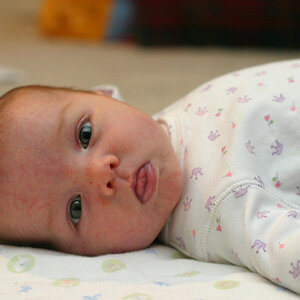lilysmom
TPF Noob!
- Joined
- Jun 22, 2007
- Messages
- 44
- Reaction score
- 0
- Location
- Pennsylvania
- Can others edit my Photos
- Photos OK to edit
Ok, I'm not even sure where I should begin!
I'm still pretty much a novice when it comes to photography. In fact, before this past week, I never even shot in manual mode. I always stuck to aperture or shutter priority modes. Once I figured out how to use my camera's meter and shoot an manual, I absolutely loved my results.
So, about a month ago, I got the brilliant idea that I'd like to set up a basic home studio to take pictures of my daughter. I ended up buying this on ebay (bad girl, I know) thinking it would be a good start. Well, it came and I realized I couldn't plug the PC cord into my camera. Ok, so then I ordered myself a hot shoe adapter that I could also plug the PC cord into. That came today, and I was soooo excited to be able to use my lighting.
First of all, my camera's meter must not recognize the fact that it's hooked up to these other lights because if I would take a photo with what my camera tells me is the correct exposure, it's waaaay overexposed.
Second of all, after I was ignoring my camera's meter and playing with the shutter speed, I thought I broke my camera. I had 2 pictures in a row that were totally dark with a little bit of light at the top. I immediately unhooked all the crap hooked up to my camera and tested my camera and thankfully it was ok.
So, what on earth do I need to do? I obviously didn't spend a lot on the lighting, but is what I bought good for anything? Is there something I need to do to my camera so that the meter works while using external lights? Or do I need to buy an separate light meter? If that's the case, how do they work? Do you attach them to the camera or what?
Oh, PS- I have a Sony A100.
Any help would be greatly appreciated. I prolly sound like a nitwit, so please be nice.
I'm still pretty much a novice when it comes to photography. In fact, before this past week, I never even shot in manual mode. I always stuck to aperture or shutter priority modes. Once I figured out how to use my camera's meter and shoot an manual, I absolutely loved my results.
So, about a month ago, I got the brilliant idea that I'd like to set up a basic home studio to take pictures of my daughter. I ended up buying this on ebay (bad girl, I know) thinking it would be a good start. Well, it came and I realized I couldn't plug the PC cord into my camera. Ok, so then I ordered myself a hot shoe adapter that I could also plug the PC cord into. That came today, and I was soooo excited to be able to use my lighting.
First of all, my camera's meter must not recognize the fact that it's hooked up to these other lights because if I would take a photo with what my camera tells me is the correct exposure, it's waaaay overexposed.
Second of all, after I was ignoring my camera's meter and playing with the shutter speed, I thought I broke my camera. I had 2 pictures in a row that were totally dark with a little bit of light at the top. I immediately unhooked all the crap hooked up to my camera and tested my camera and thankfully it was ok.
So, what on earth do I need to do? I obviously didn't spend a lot on the lighting, but is what I bought good for anything? Is there something I need to do to my camera so that the meter works while using external lights? Or do I need to buy an separate light meter? If that's the case, how do they work? Do you attach them to the camera or what?
Oh, PS- I have a Sony A100.
Any help would be greatly appreciated. I prolly sound like a nitwit, so please be nice.

As an eBay Associate we earn from qualifying purchases.



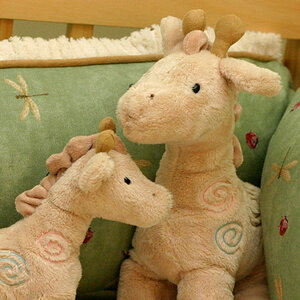
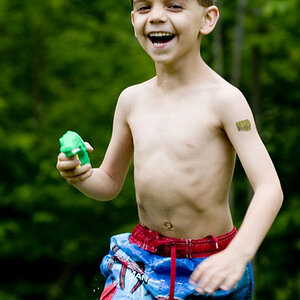
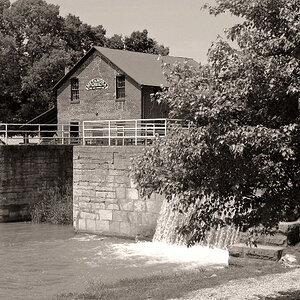
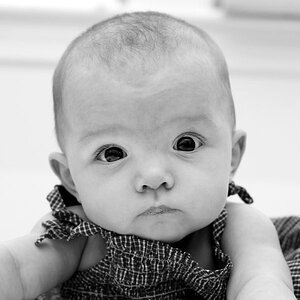

![[No title]](/data/xfmg/thumbnail/35/35946-771bfce9b2727c9126587d96c471da80.jpg?1619737254)
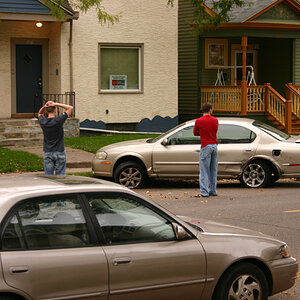
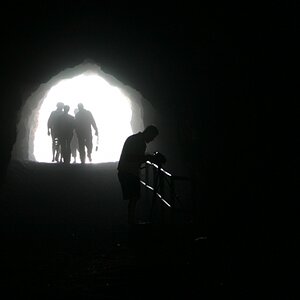
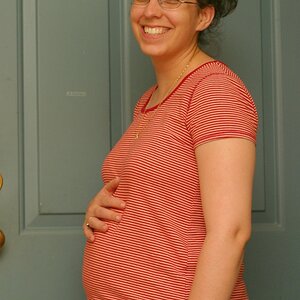
![[No title]](/data/xfmg/thumbnail/35/35948-700e0d840da0ca73727b1bd6d99b4142.jpg?1619737257)
